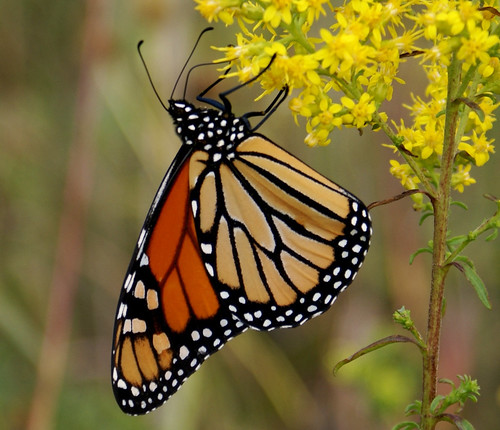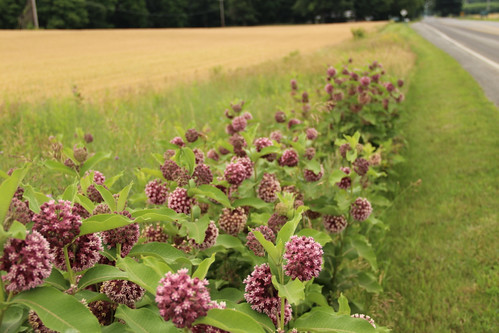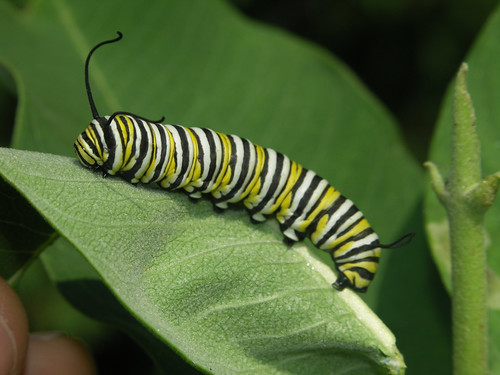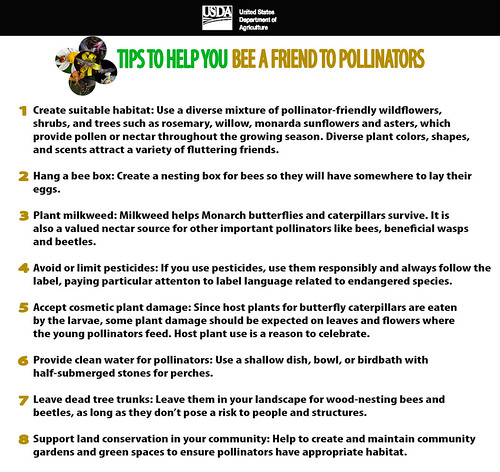
An update to one of USDA’s Natural Resources Conservation Service (NRCS) key conservation programs will enable farmers and ranchers to aid the imperiled monarch butterfly. This year, NRCS updated its Conservation Stewardship Program to include incentives for farmers and ranchers who plant milkweed and other nectar-rich plants favored by monarch butterflies.
Monarch butterflies depend on milkweed to lay their eggs during their annual journey from Mexico to the United States to as far north as Canada. Data show that monarch populations have decreased significantly over the past two decades, in part because of the decrease in native plants, including milkweed, on which their caterpillars feed.
NRCS conservation programs help monarchs and other pollinators by providing assistance to farmers and ranchers who plant pollinator-friendly wildflower, shrubs and trees. This update to CSP is intended to better target that help to monarchs in need. Specifically, the agency created a special supplement to CSP’s Pollinator and Beneficial Insect Habitat Enhancement Activity that encourages planting milkweed and other plants with high-value nectar for monarchs.
CSP helps farmers and ranchers maintain and improve their existing conservation systems and adopt additional conservation activities to address priority resources concerns, earning payments for conservation performance. It’s available to farmers and ranchers nationwide.

Agriculture and development have removed much of the native milkweed that once spanned the country. In addition to its leaves serving as the sole food for monarch butterfly caterpillars, milkweed has other ample benefits. It produces high quality nectar, which is not only used by monarchs but native and honey bees, too. Milkweed also supports insects that are natural predators and parasitoids of many crop and garden pests, providing a natural pest control to destructive insects.
Selecting the appropriate milkweed species and nectar producing plants for different parts of the country is an important part of NRCS’ conservation efforts. Because monarch butterflies are on the move, they need to have the right plants at the right time along their migration route. That means having milkweeds for the caterpillars to complete their life cycle and nectar producing plants in bloom for needed energy when the butterflies are passing through an area. NRCS is working with many partners to develop recommended species list of native plants to meet the unique habitat needs for the monarch butterfly.

NRCS is also working to broaden its monarch-friendly activities beyond CSP into other Farm Bill conservation programs, such as the Environmental Quality Incentives Program (EQIP) and Agricultural Conservation Easement Program (ACEP). These programs already help provide benefits to pollinators, but NRCS hopes to tailor these as well to the needs of monarchs and to target specific funding to enhance or restore monarch habitat across its range.
NRCS’ effort is part of a multi-agency, international strategy to reverse the monarch’s population decline in North America. The North America Monarch Conservation Plan has a goal for 10 million acres of monarch habitat to be created or restored in the United States. President Obama met with Mexico President Enrique Peña and Canada Prime Minister Stephen Harper last year to discuss a continent-wide effort to help the monarch and restore loss of milkweed.
This week marks National Pollinator Week, and USDA is highlighting the important role that pollinators, including monarchs, play in agriculture. To get started with NRCS, visit your local USDA Service Center or www.nrcs.usda.gov/GetStarted.




